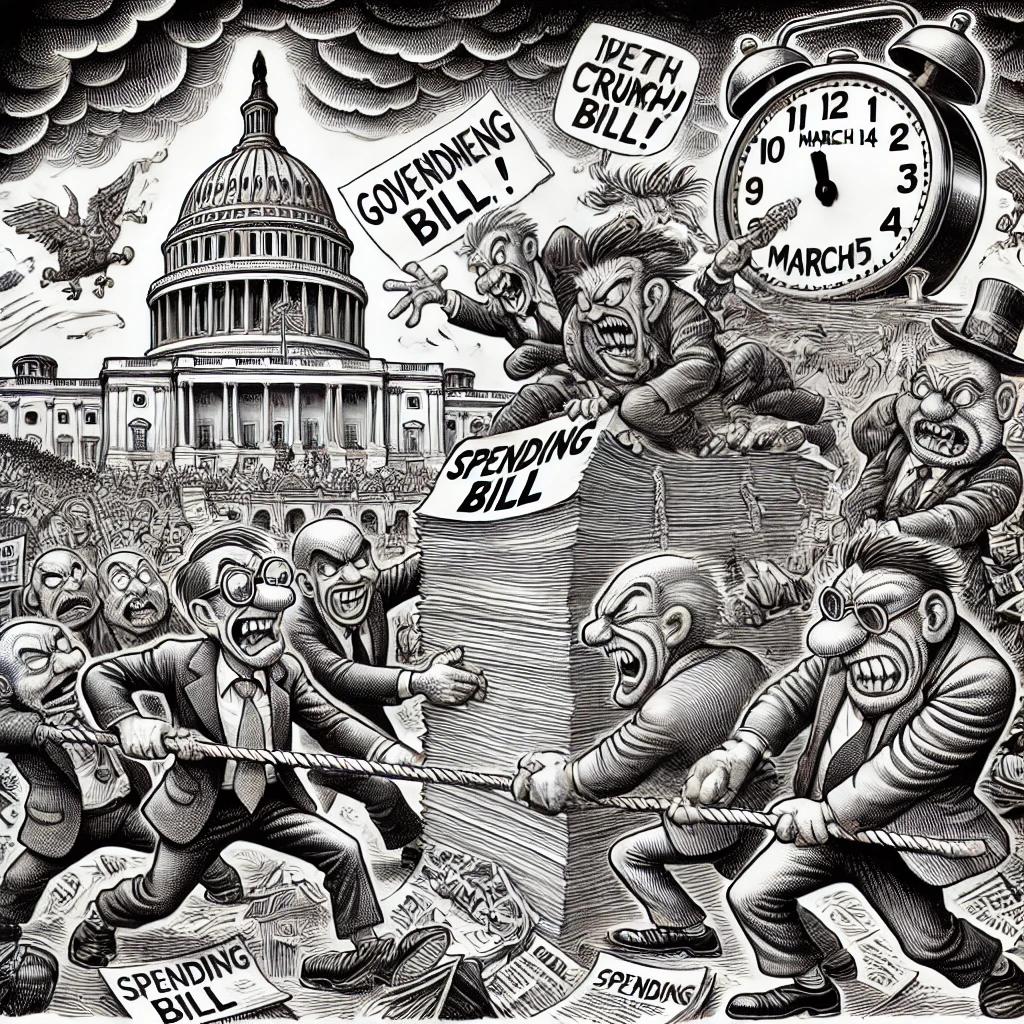Washington moves in cycles, and this cycle—like so many before it—brings with it the threat of a government shutdown. The deadline is March 14. The bill is 99 pages long. The former president, ever the general in exile, steps onto his chosen battlefield—Truth Social—and issues the call: vote for the bill, keep the lights on, fight another day.
A Calculated Gamble by Speaker Johnson
House Speaker Mike Johnson (R-LA), a man acutely aware of the treacherous terrain beneath his feet, has scheduled a vote for Tuesday. The bill, a precarious compromise, preserves current spending levels while injecting an additional $8 billion into defense and $6 billion into veterans’ healthcare. Non-defense spending is cut by $13 billion, a number chosen not just for fiscal restraint but to pacify the ideological factions within his own party.
The move is a calculated gamble. Johnson is daring the Democrats to reject the bill and shoulder the blame for a shutdown. At the same time, he is placing a bet on the Republican caucus—that they will suppress their usual instinct for internal combat and unite, at least for the moment, to force the bill through.
Trump Calls for Unity, But for How Long?
Trump, ever the tactician, senses the stakes. He frames the vote as a necessity, not an endorsement of the establishment but a means of survival.
“The House and Senate have put together, under the circumstances, a very good funding Bill (‘CR’)! I am asking you to give us a few months to get us through to September so we can continue to put the Country’s ‘financial house’ in order.”
The language is revealing. This is not about governance; it is about positioning. Trump does not speak of victory, only of delay. The enemy, as always, is the Democrats. They will “do anything they can to shut down our Government,” he warns, calling on Republicans to hold firm. “We have to remain UNITED—NO DISSENT—Fight for another day when the timing is right.”
It is a plea for discipline, but it is also an implicit threat. The Republican Party has never been fully under his control, but it is in his shadow. The primary season looms. To cross him now is to risk exile later.
The Fallout of a Shutdown
Unlike past shutdowns, this one would not be a partial closure. It would be total, sweeping across all discretionary spending because none of the twelve appropriations bills have been signed into law. The essential machinery of the state—Social Security, Medicare, Medicaid—would continue, but the bureaucracy would stall. Applications would pile up. Services would be delayed.
The economic consequences, as Bloomberg Intelligence warns, would be sharp but short-lived. A month-long shutdown could shave 0.4 percentage points off GDP growth in the first quarter, but a rebound would follow. The markets do not fear a shutdown—they fear uncertainty. The longer it drags on, the more the consequences multiply.
Key disruptions would include:
- Economic Data Delays – Reports on inflation, unemployment, and retail sales would be postponed, obscuring critical insights into the economy.
- Federal Workforce Impact – Around 850,000 workers could be furloughed, an entire class of Americans caught in the crossfire of political strategy.
- Federal Reserve Operations – The Fed, insulated from the chaos, would proceed with its March 18-19 FOMC meeting, an island of continuity in a sea of dysfunction.
The Stakes in Washington’s Eternal Struggle
The shutdown is not just a budgetary matter—it is a test of will. The Republican House majority is razor-thin, the Senate requires bipartisanship, and the two parties remain locked in their familiar battle.
Historically, shutdowns of this scale have only happened twice when one party controlled the White House, House, and Senate—both under Trump’s first term. That alone sets the stakes. The Republican Party has always balanced between governance and rebellion, and now, once again, it must choose.
The March 14 deadline approaches, but the real deadline is political. The only question left: Who blinks first?



